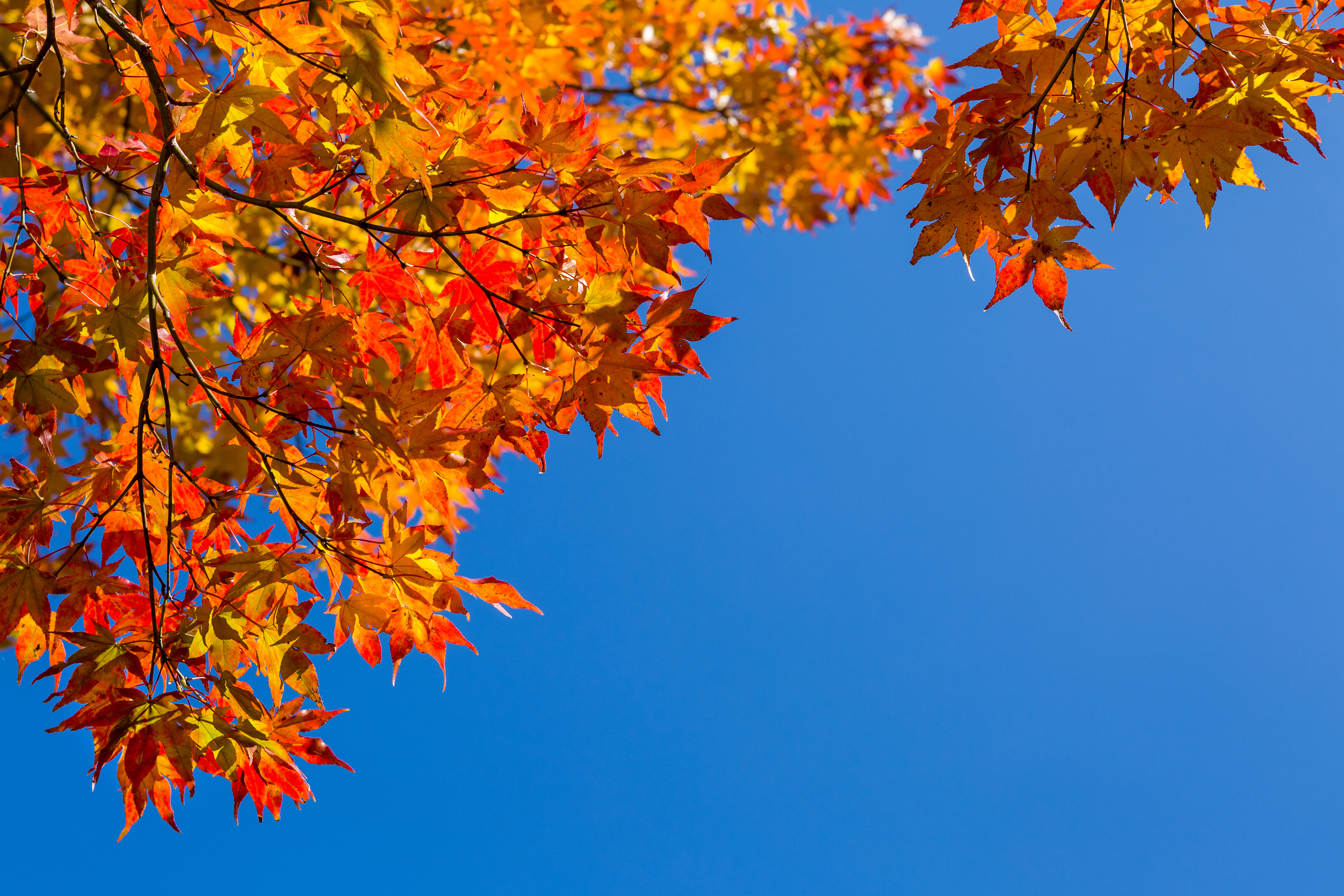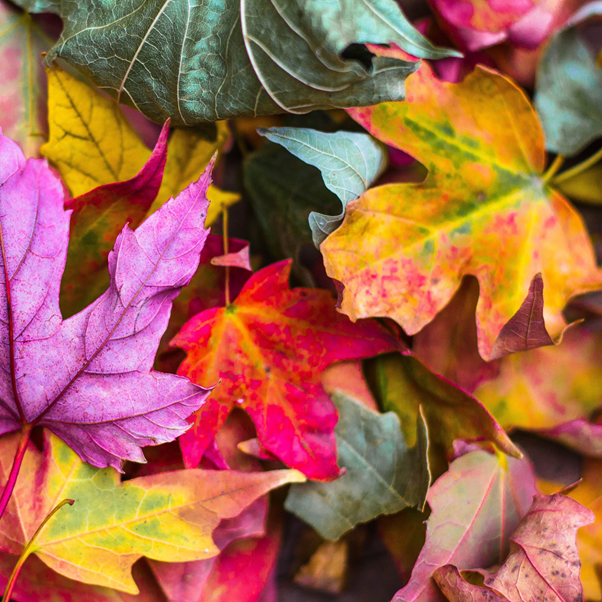

Autumn colours: forecasting fall foliage
Autumn is known for its beautiful displays of colour as the leaves on the trees transform from greens to yellows, oranges and reds. But did you know that the weather plays a key role in how intense the colours are, as well as how long the colourful display lasts?

Before we look at the role of the weather, let’s start with why the leaves change colour in the first place.
The changing of the leaves
Leaves get their green colour from a pigment called chlorophyll. During the autumn months as the days start to get shorter, the leaves receive less sunlight. This triggers the chlorophyll in the leaves to break down, revealing the other pigments that are always present in the leaves to be revealed.
These pigments are:
Carotenoids and xanthophylls – yellow and orange
Anthocyanins – red and pink
What role does the weather play?
Weather conditions can influence the depth of the colours we see during the autumn months. Here are a few of the ways weather has an impact.
Sunny days
Although the production of new chlorophyll stops during the autumn, photosynthesis can still occur on sunny autumn days using up the remaining chlorophyll in the leaves. This causes the sugar concentration to increase, and more anthocyanin is produced – turning the leaves redder.
Cold nights
Autumn colours typically start to show once overnight temperatures begin to drop low enough. During cold nights, low temperatures destroy the chlorophyll in the leaves, and this causes the leaf to fade to yellow. If the temperatures overnight stay above freezing then anthocyanin production is enhanced and the leaves take on a red colour.
Dry weather
During dry spells, sugars become concentrated in the leaves, which means more anthocyanin is produced and the leaves turn redder.
Wet and windy
The autumn months are known for unsettled weather. Strong winds and rain can knock leaves off the trees prematurely, shortening the colour display at its peak. Losing its leaves is a smart move for trees in stormy weather, as the strong winds can move through the bare branches more easily.
Of course, the main reason trees lose their leaves is to conserve energy during the dark winter months. Shedding leaves allows trees to preserve the moisture in their branches and trunk instead of drying out and dying.

It is not just the weather during the autumn months that influences the colours we see, weather patterns throughout the year have an impact too.
Plenty of sunshine during the spring or summer, along with some rainfall, means a good growing season for trees in the UK. This helps to build up plenty of the sugars which produce the stunning autumn reds, oranges and yellows when it comes to the autumn. The most vibrant displays of autumn colours occur when a dry summer is followed by an autumn with dry and sunny days, and cold but not freezing nights.
On the other hand, drought conditions during the growing season can lead to the leaves dropping off the trees prematurely – before they have really started to change colour. This happened in the UK during 2022, when a prolonged spell of dry weather along with a number of heatwaves during the summer led to drought conditions across much of England. This led to the leaves on some of the trees turning brown in August or even falling off the trees altogether. This so called ‘false autumn’ is a sign that the trees are stressed due to drought. Climate change will make droughts and heatwaves more frequent, likely and intense, and could lead to more false autumns in future.

Deeper shade of blue
The contrast of colourful autumn leaves against a deep blue sky make for stunning photographs. And you may have noticed just how vivid a shade of blue the autumn sky can be. There are a couple of reasons for this:
- Humidity levels drop off as the temperatures go down, so there are fewer water droplets in the sky. That means less Mie scattering, which in turn means less haze and more intense blue skies.
- The sun is at a lower angle, which increases the amount of Rayleigh scattering of blue light towards our eyes.
About the author
Gemma Plumb has been a meteorologist for over 15 years and is currently working for DTN as a media meteorologist at the BBC. She has also forecast for a variety of sectors including energy, media, transport and utilities.
Gemma is one of the creators and hosts of the weather podcast - For the Love of Weather - which looks at the science behind weather and climate and how weather can impact our daily lives.
A keen science communicator, she is passionate about sharing her love of the weather. You can find Gemma on TikTok making funny, engaging and educational weather-related videos (@theweatherpud).





